Sick of COVID: The Long Haulers
Meet the COVID-19 patients who are still suffering the after-effects of the disease, months after catching the virus. They weren’t ill enough to be hospitalised, and thought they’d recover after a fortnight. Now, though, they’re on a rollercoaster of bizarre symptoms. They’re calling it ‘long COVID’ - but what is it? Plus, in the news: children seem to harbour more coronavirus than adults; a new space mission to Mars gets under way, and the science of cows licking each other...
In this episode
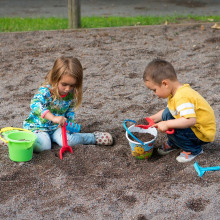
01:03 - Children can harbour more coronavirus than adults
Children can harbour more coronavirus than adults
Taylor Heald-Sargent, Lurie Children's Hospital of Chicago
Previous studies have suggested that children may be poor spreaders of the coronavirus, and may even be less susceptible to catching it. And in this regard the UK Chief medical officer Chris Whitty has called reopening schools “a priority”, describing how children are much less likely to come down with serious COVID-19. But a new study out of the Lurie Children’s Hospital of Chicago suggests that kids may actually play host to significant amounts of the virus. Taylor Heald-Sargent and her colleagues were looking at coronavirus genetic material - or ‘viral nucleic acid’ - inside the noses and throats of their patients, and she told Phil Sansom what they found…
Taylor - Older children had similar amounts of the pieces of virus, viral nucleic acid, to adults. And younger children actually had a bit more than the older children and the adults.
Phil - That's surprising, right? Because kids don't seem to get sick with COVID, so people - I thought - had thought that they just didn't get infected.
Taylor - So actually, and I find this quite interesting in general, is: why aren't kids getting as sick as adults? And one of the possibilities was that kids just weren't able to get infected, or if they got infected, they weren't going to be able to sustain replication. And this data argues that that's not the case. Kids are able to get infected and have replication of the virus.
Phil - Okay, how did you do this? How many kids did you look at?
Taylor - Actually, this was a clinical observation. We noticed that a few of our young kids that had recently been screened just for clinical symptoms, had very high amounts of viral nucleic acid. And when we went back and we looked at all the tests that we had done, we found this pattern. After we controlled for duration and severity of infection we were left with 145 patients. We had younger children, less than five years old; we had children aged five to seventeen years old; and then adults over 18.
Phil - So you're comparing young kids, older kids, and adults who have had the disease for the same amount of time and are physically the same amount of sick.
Taylor - Correct.
Phil - How much more virus did the younger kids have than the older kids?
Taylor - It's hard to measure directly how much more virus the children had than the adults, because what we looked at was just the nucleic acid. Children have about 10 to a hundred fold more nucleic acid compared to the older children than adults. And other previously published work by other groups have found that about that much nucleic acid correlates to having more infectious particles.
Phil - Which is quite a shock, when people thought, “oh, these kids aren't going to spread the coronaviruses, it's okay to send them back to school.” The people who were saying, “no, this isn't safe” - this is a lot of support in their corner, isn't it?
Taylor - It's an early piece of data that's needed to understand if kids have infectious virus, but we didn't look at actual infectious virus. As a scientist, I always want to be as precise as possible when I'm talking about my data. So I can't say for sure that kids have more infectious virus, but this does argue that it's possible.
Phil - The big question as well is, why aren't these kids as sick as the adults?
Taylor - I find that fascinating. What are kids doing? What's different about their bodies that allow them to be somewhat protected compared to adults? I wonder if studying children will help us figure out how to treat adults. There are several different possibilities. One of the ideas is that it has to do with the receptor for the virus, and actually where it's located in children, and how much of it there is. Another possibility is the virus just isn't able to get down into the lungs as well. And that could be related to virus, or it could be related to the immune system. Because that's a third possibility, is that the immune system in children is able to protect against viral infection. Whereas in adults, the immune system somewhat overreacts, and actually causes damage itself. I think that it's probably the immune system, but that's a hypothesis still.
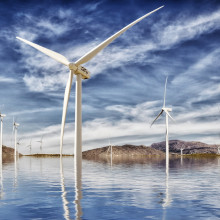
05:21 - The world's first consumer-owned wind farm
The world's first consumer-owned wind farm
Sarah Merrick, Ripple Energy
This week the programme is sponsored by Ripple Energy. They're doing something that's unusual, and also a first; and they want to share the opportunity with you. And with 20 years' experience in the wind power industry, Sarah Merrick is their founder and CEO. She told Chris Smith the plan...
Sarah - What Ripple does is we enable individual households to own a bit of a wind farm, and have the low-cost, clean electricity that it generates supplied to their home. Our first project is now open, it's Graig Fatha in South Wales. So we're really keen for people to be able to join the project and be part of what is the UK's very first consumer owned wind farm.
Chris - Can you tell us a bit about how this business will work, Sarah?
Sarah - Customers become a member of a co-op which owns the wind farm; and it's all very, very democratic, it's one member one vote; so you simply decide how much of the wind farm you want to own depending on how much electricity you use, then you can just sign up and join in literally a couple of minutes on our website, and you become a member of the co-op and you own your bit of the wind farm. And then we go away and build it! And then once it's operational, you get your share of the electricity that the wind farm generates supplied to your home via the grid, and then the savings that are associated with your ownership are just applied to your bill automatically each month, basically. So we take care of everything, right from gathering the thousands of people together, managing the bills of the wind farm, and then managing their relationship with our supply partners so that everyone gets savings that you apply to their bill straightaway.
Chris - How much is this going to cost to build?
Sarah - The cost of building the whole turbine is just over 4 million pounds. And then an individual household's share of that, if they wanted the wind farm to generate as much electricity as they use each year, the upfront cost is around 18-1900 pounds. And for that, they would get savings of around 25% on their electricity bill. Because the electricity is coming from the grid, you still need to pay all the grid charges; there's lots of taxes and levies as part of your electricity bill as well, you still need to pay all those bits. It's the electricity part of your electricity bill that you get the saving on. So over the 25 year lifetime of the wind farm, we estimate it's around a 25% reduction on your electricity bill each year for the 25 year lifetime.
Chris - And therefore, how many years after I've invested is it before I've effectively got my money back in saved electricity?
Sarah - We're expecting it to be around 14 years based on the government's electricity price assumptions. If electricity prices are higher than those assumptions, the payback is shorter because your savings would increase. If the price of electricity goes down, your savings reduce as well.
Chris - What happens if I move house though?
Sarah - Because it's attached to you and not your home, if you move you just phone up your supplier like you would if you moved home, and just say, "hey, I've moved," and they just then supply it to your new home. So it's really portable. It goes wherever you go, essentially.
Chris - You said that the average household investment will be about 2,000 pounds. So you must be, if you want to raise 4 million quid, you must be looking for about 2,000 subscribers.
Sarah - Yes. Just over 2000 subscribers. Because it is limited, we're expecting it to fill up by the end of August.
Chris - Is that the point of return, where you've got to be in the door by the end of August or the opportunity is going to pass?
Sarah - Exactly, yes. Once the wind farms full, there's no more of it to be bought by anyone, so people need to get in in the next three or four weeks in order to be able to benefit, and be part of the UK first consumer owned wind farm.
Chris - And when will it actually become operational? When would I start to see money flowing in to discount off my bill?
Sarah - We're expecting it to be spring next year, sort of April time. It's a relatively easy build, it's just a single turbine so it shouldn't take very long to construct. People would see savings on their bill from around April 2021 onwards.
Chris - And this is a first, isn't it? I don't think anyone has actually tried to do this with a wind turbine like this before. Why did you decide to go down this path?
Sarah - It's a world first! Having worked in the wind industry for so long, I saw that it was possible for big companies like Google and Facebook, they could own bits of a wind farm or a whole wind farm themselves; but it seemed really unfair that me as an individual consumer, I wasn't able to actually own what is now the UK's cheapest source of power direct. People want to act on climate change, and they want low-cost electricity as well. So that's why I set up Ripple to solve that for people.
Chris - And what safeguards are there so that people who do decide to invest know that their money is secure, and that the company for 25 years is going to be there, and they're going to get their money back?
Sarah - The co-op owns the wind farm, and they will do for 25 years. Ripple doesn't own the wind farm; we're the managing agent. so we just bring everything together and make it happen.
Chris - And if I decide I want to invest more than 2,000 pounds, are you taking bigger subscriptions so a person could therefore discount proportionately more of their electricity costs?
Sarah - The most that you can invest would be the equivalent amount of the wind farm that would generate your consumption plus 20%. So you're owning a bit of a wind farm to get low-cost, clean electricity that you use yourself.
Chris - So if you have now convinced listeners to the Naked Scientists that this is a good idea, what should they do?
Sarah - They can join Ripple - just go to rippleenergy.com - and you can sign up there. We're expecting it to close around the end of August, so people need to act pretty quick if they want to be part of this project.

10:59 - Perseverance rover blasts off to Mars
Perseverance rover blasts off to Mars
Ben McAllister, University of Western Australia
It’s been a big week for space exploration. SpaceX’s Dragon Endeavour craft safely returned crewmembers from the International Space Station, culminating in the first splashdown the ocean has seen in 45 years. And, as Ben McAllister reports, a key Mars mission we actually featured here on the programme a few weeks ago got underway…
On the 30th of July 2020, a rocket launched from Cape Canaveral Air Force Station in Florida USA, to begin a 7 month, 480 million kilometre journey to Mars. Aboard is the Perseverance Mars rover.
The Rover was launched now as we are in a window known as the “closest approach” between the Earth and Mars. Because Mars is farther from the Sun, it takes about twice as long as Earth does to complete a lap of the solar system. This means that the two planets are at their closest only about once every two years; which is why it’s now, or 2022!
In some ways, Perseverance is like a slightly more developed big brother to Curiosity, the most recent previous Mars rover. In fact, many of its design, launch, and landing features are based on Curiosity, with a few extra new bells and whistles added.
The landing process will also be similar. The rover will reach the Martian atmosphere, and then have to complete the terrifying seven minute descent to the surface without any help from NASA.
The rover will enter Mars’ atmosphere travelling about 19000 km/h, and descend in three stages. First it will deploy an incredibly strong parachute to do the brunt of the work. Then, it will detach from the parachute and employ rocket boosters pointed downwards to counteract the rover's velocity. Finally, the rover itself will be lowered gently to the ground from the platform holding the rocket boosters, using what NASA calls the “sky crane”.
In contrast to the car-sized Curiosity, Perseverance is even bigger, has better wheels, and is equipped with new technology - including a fancy rock drill for taking samples of the rocky Martian surface, and its own helicopter drone called “Ingenuity”. If it’s successful, it will perform the first powered flight on the Martian surface - Mars’ own Wright brothers moment! It will then be used to help scout locations for Perseverance to visit.
But it isn’t just the kit which is different. Perseverance also has a brand new, exciting mission - a mission all about life on Mars!
One major goal is to search Mars for evidence of ancient microbial life; that is, looking for remnants and traces left behind by any small organisms which may have been present billions of years ago, when Mars was less dry and more supportive of life.
The second major goal is to test a bunch of different equipment and systems for possible future human habitation on the red planet: for example, testing a process for converting Mars’ carbon dioxide-rich atmosphere into oxygen; and testing the suitability of a range of materials for use in future space suits intended to support humans living and working on the harsh, inhospitable Martian surface, where the temperature rarely gets above zero, abrasive dust storms can be frequent, and the incoming radiation levels - with no ozone or atmosphere to block them - can be lethal.
For now, as far as we know, Mars is the only planet in our solar system populated entirely by robots. However, if Perseverance is successful in paving the way for future human habitation, it may not belong to the robot overlords for long!
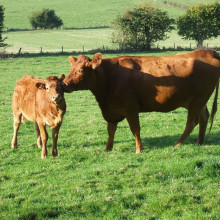
14:50 - Cows licking cows: social dynamics of a happy herd
Cows licking cows: social dynamics of a happy herd
Gustavo Monti, Universidad Austral de Chile
Gefore social distancing, when we saw our friends we might have shaken their hand, slapped them on the back, or even given them a hug. Cows, though, choose a more intimate route and lick each other on the face and neck to say hello. Now, new research from the Universidad Austral de Chile has used this licking behaviour to assess the hierarchical relationships between cows in a herd - as lead researcher Gustavo Monti told Eva Higginbotham...
Eva - To be completely honest, in these trying times, I can't really think of anything more relaxing than sitting in a field and watching a group of cows lick each other. And that's exactly what members of the research team did every day, several hours a day, for a month: noting down who licked who, who got the most licks, who got the least licks, and how this changed over time. But the question remains: why?
Gustavo - One of the motivations of this study has to do with one consequence, which is arising from the way that we are managing cows, let's say in the Western type of production especially. Our systems are very intensive nowadays. And as a part of the management, animals are grouped and regrouped very often for different purposes. This is a problem because to establish this hierarchy and this relationship for a group of cows takes some time. The problem is once they reach this equilibrium, or status of recognition, then because of the management, some of the cows - or even the leader - is removed from the group and then new cows or new animals come to this group. Therefore they have to reestablish all the process all over again. And this has happened several times within a year within a group, and within the life of the cows.
Eva - Previous studies have shown that the constant reshuffling of animals can make them stressed out, and farmers have known for a long time that stress can have a big effect on milk production. The researchers wanted to understand the effects of this reshuffling on the social dynamics of the herd, and realised that they could use licking events as a window into these social dynamics. So they observed the cows without interfering.
Gustavo - We are some sort of Big Brother, yeah?
Eva - And plugged the data into a computer to perform a modern technique called social network analysis, where each cow is represented by a node and they could scrutinise the complex web of relationships over time. Kind of like Facebook for cows.
Gustavo - It's the same technique that is used nowadays with big data. So when Facebook or whatever company wants to evaluate who are your relationships, with whom you are working, or with who are you in contact; it's the same sort of techniques that were used for our situation. One of the important findings of this study was that unexpectedly, dominant cows licked more than the younger cows in the group, and seems that this could explain that the leader in some way, is offering this as a sort of action to reward the low level animals to keep the cohesion. I think one important finding is that in social grooming in both ways, they can establish individual bonds between members of the group. And this also enhances the overall social cohesion of the herd.
Eva - They also found that cows that were new additions to a herd were licking more often, and hypothesised that maybe they were doing favours and trying to be friendly to get down with the new group. Interestingly, though, the cows that did the most licking received the least licks in return. This might be because licking another cow is something of an investment. And if you go around licking everybody, it might suggest that you're not going to invest in specific relationships, and so the other cow might not bother investing in you either. Overall, Gustavo and the rest of the team suggest that licking can be used as a positive marker for wellness within a herd. If there's lots of licking, things are stable and everyone is content with their friends. If there isn't, things are going wrong in the complex social and emotional relationships of the herd; and Gustavo argues that farmers should be mindful of this important aspect of cow's welfare when reshuffling the group.

21:09 - Long covid: Paul's experience
Long covid: Paul's experience
Paul Garner
Patients with severe COVID-19 end up in hospital, often in intensive care, and many don’t make it. It’s no surprise that those who pull through may need months of rehabilitation. But in this programme we’re talking about those who haven’t been to ITU, were told their cases were ‘mild’, and expected to recover in a couple of weeks; that recovery still hasn’t happened. Paul Garner is one such person - he’s an infectious diseases doctor at the Liverpool School of Tropical Medicine, and he’s been vocal about his experience. He told Phil Sansom how it started about five days after he first felt symptoms…
Paul - My heart was racing; I felt really hot; I felt absolutely exhausted; and I felt as though I was about to pass out. I actually thought I was dying, I thought, "Oh my God, Paul, this disease is really bad. And this is it." That was the start of this twelve week cycle of abuse from this virus. You just didn't know when you woke up in the morning, you might then have ringing in your ears, or you might have a blinding headache, or you might have pain in your calf, or you might have a cough, or you might have diarrhoea one morning, or you might just have a mugginess in your head and not be able to understand what's going on around you. It's really, really horrible.
Phil - Really? This has been twelve weeks of this?
Paul - Yes, but the thing about the disease, it changes. After about five or six weeks, I started getting these highs. You actually sleep, and when you wake up from the sleep you feel incredibly refreshed. And then you go out and perhaps walk a little bit too far, but bang, it comes back and socks you between the eyes. It's not just walking or physical exercise, it's also mental; and it's also emotional, so if you have emotional events, that consumes your energy and makes you unwell. This illness changes your life.
Phil - Have you had any of the coronavirus tests?
Paul - I had the antibody test done and that came out positive.
Phil - And how have doctors generally responded to you, with all these symptoms and this illness that just keeps going on?
Paul - Other people have suffered a little bit more than I have, a white male doctor. Other people have had some of their symptoms somewhat dismissed. And part of the reason is the symptoms are really so strange. I actually think that people sometimes don't believe the symptoms that they're getting, because it does mess around with your head. It messes around with your mood. And then if they have a doctor that is relatively unsympathetic or doesn't know about long COVID, they get dismissed.
Phil - Are there other people in the same boat?
Paul - There's thousands. Most of these people are people that are not officially recorded in the system.
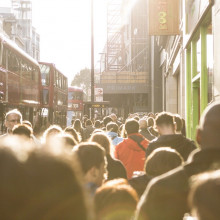
23:54 - How many are still ill with COVID-19?
How many are still ill with COVID-19?
Tim Spector, King's College London
Given that the NHS doesn’t have good records on these patients, how do you find out the scale of the problem? One way is using the UK’s COVID symptom tracker app, which has got millions of willing participants logging the symptoms they’re experiencing every day. Phil Sansom spoke to Tim Spector from King’s College London, who leads the team looking through the data…
Tim - We noticed this after about the first month of collecting symptoms, and we found that there was a group of people who just kept logging. The average duration of symptoms was between 10 and 12 days, but around 10% of them had symptoms that lasted for over a month; perhaps one in twenty still have symptoms three months on. One in twenty people, when you think of perhaps 3 million people infected in the UK, is a lot of people with debilitating symptoms.
Phil - That's a huge proportion. What kind of symptoms were these people getting?
Tim - Well, we ask in the app about 19 symptoms, and the ones that seem to be coming up strongest were fatigue; a really severe fatigue that initially meant it really could hardly get out of bed. And that would often cycle as well, so it would improve and then get worse. Muscle aches was another common thing that has persisted, and shortness of breath. The other one which was rather strange, which occurred in about a fifth of these people, was loss of smell; and this seems to be lasting months in some people, which doesn't sound very important until you start thinking about how that really affects your ability to appreciate food and drink, and can make you very depressed if you lose it. But people were presenting with a whole range of different symptoms on top of that. We actually had three people that after three months, we're still having intermittent fevers.
Phil - Wow.
Tim - It was just really strange. And we had about 8% of people that had rashes that would appear on their fingers and toes. This weirdness of symptoms and variety is now starting to be understood, because it looks like there's different antibody responses in all these different subgroups. But I think as time goes on, we'll see this not as necessarily one disease, but as perhaps six or 10 sub-diseases or sub-responses to this identical virus.

26:18 - Long covid's strange symptoms: a GP explains
Long covid's strange symptoms: a GP explains
Helen Salisbury, GP
Chris Smith spoke to Oxford-based GP Helen Salisbury, who said she's been seeing patients with these ongoing COVID-19 symptoms...
Helen - Absolutely. And I would say the most common symptom is fatigue, just not being able to do stuff. I've got patients who previously have been really fit; they'll be the sort of people who would go running several times a week. And so actually they weathered the initial illness not so badly. Certainly they didn't need to go and get oxygen or go to hospital or anything like that. And as a consequence, they never had a swab, so they never got a proper diagnosis. But now months down the line they still get absolutely exhausted if they walk a quarter of a mile to the local shop, and then have to rest. I've got patients who say "I was okay this morning, but after I had my shower, I had to sit down for an hour and a half". That's no way of getting back to life.
Chris - And how quickly after people - I don't want to say recover, because they haven't - but how quickly after the acute symptoms do people notice that they're getting these bizarre constellations of symptoms, and particularly this fatigue?
Helen - I think it's a little bit difficult to know, because for many of my patients, they didn't ever contact me. Particularly the people who were ill in April 0- there was a big message going out which was saying, don't call anyone unless you're really, really, really sick. It's a different pattern for each patient, I think. And they each have a different set of symptoms. For some, the thing that's really bothering them still is being out of breath. I've got one patient who's having fevers, persistent fevers all the time; which is really difficult because everyone thinks she's still infectious, which she isn't, but she's still really affected by those fevers. And it's stopping her doing things.
Chris - When you say that you know she's not still infected - how do you know that? The reason for asking this question is Paul Garner, who we were hearing from just now - the infectious diseases doctor who described his experience - he said he had an antibody test and it was positive, but he was interested in whether or not he still had virus in him.
Helen - It's really difficult to tell. This particular person I think has had swab tests that prove she's not carrying the viral RNA anymore. And some of the patients have positive antibody tests, but not all of them. And that's also a really difficult thing for people because if they didn't have a swab in the first place, although they had symptoms that came on the right time and they had a really convincing set of symptoms - you think, yeah, that's definitely COVID - they don't now have any antibodies because we know that some people's antibodies wane very quickly. So it's actually really difficult to tell. And I think somebody else was talking about how difficult it is if GPs don't understand what's going on, and if you have no swab to start with and no antibodies now, and that collection of really weird symptoms, it's unfortunate that quite a few patients are not getting a fully sympathetic or empathetic response from their GPs.
Chris - We'll dwell a little bit more on testing a bit later in the program to explore some of those deficiencies that you've highlighted, Helen. Have you noticed, though, in the patients that come to see you with these symptoms, are there any general trends of the kinds of people who are presenting like this, and you can say they fit a particular group? Or is it just all and sundry, all ages, both sexes, young, old, no difference?
Helen - All and sundry. I've probably got more slightly younger patients, actually; not so many patients in their sixties and seventies, but more patients in their thirties and forties, I would say. I mean, that may just be the group of patients I'm seeing. One of the good things is that I'm just beginning to see some of these patients saying, "do you know what, I feel a bit better; and it's not just for a day or two, I've actually felt better for a whole week".

31:20 - Heart inflammation persists long after coronavirus infection
Heart inflammation persists long after coronavirus infection
Valentina Puntmann, University of Frankfurt
Hints are starting to emerge about the damage or complications that are going on in multiple different organs in long covid patients. And a group of medical scientists in Germany have recently discovered ongoing heart issues in a significant proportion of people that only ever had this ‘mild’ COVID-19. Cardiologist Valentina Puntmann explained to Phil Sansom…
Valentina - We investigated patients that have recently recovered from the COVID-19 illness. We had a very, very deep look at their hearts. And in these patients, we found that many, many of them, even if they didn't really have a rough course of the original illness, they still have persistent, ongoing cardiac inflammation; a little bit like a flu of the heart.
Phil - How many of them had this kind of inflammation?
Valentina - We scanned a total of 100 patients. 78 of those have had some findings in the heart. Of these, 60 had very active inflammation within the heart muscle - something that we call myocarditis - as well as inflammation of the lining of the heart, pericarditis.
Phil - How long is this after they were originally sick?
Valentina - The average time from their original positive task was 71 days.
Phil - Wow! That's a long time since they had this positive test. What's going on?
Valentina - This is the question that obviously I can only speculate on; and it is not due to an ongoing infection of the heart muscle, so it is not that the virus remains within the heart cells. The body itself is understanding the inflammation of the heart as something that it has to fight against or tries to control. But this is obviously, at this present point, hypothesis.
Phil - Do you know whether this kind of heart inflammation might link to any specific symptoms that people are feeling, months after they were supposed to have gotten better from COVID?
Valentina - That is very difficult to say because heart inflammation does not present with specific symptoms. Being not fit, especially young patients, this is one of those symptoms that definitely can make us aware of it. However, inflammation takes a long time to present itself with what we call textbook symptoms: chest pain, shortness of breath, the swelling of the legs.
Phil - But in general then this might be kind of a hint as to why these people are still unwell?
Valentina - Absolutely. This is definitely one of the things that we should look for very early and very fast if possible. In cardiac inflammation trying to be very sporty very fast is probably not the right thing, and I think if any message can be given at the present point is that we just need to give the heart as well as the rest of the body time to heal.
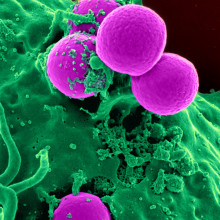
34:32 - Long covid & the immune system: what's going wrong?
Long covid & the immune system: what's going wrong?
Clare Bryant, University of Cambridge
Inflammation is a really strong hint that the patient’s own immune system is a major player in this 'long covid'. Chris Smith asked University of Cambridge immunologist Clare Bryant what might be going wrong...
Clare - That's a great question, Chris, and somewhat complicated by the fact that we're really just beginning to understand what's happening with the immune response per se. But basically, inflammation is the way in which the body tries to control infections, and therefore the production of inflammation should be a protective response against the virus. But what seems to be happening with this infection is that the body is mounting an excessive response. And then the longer tail, presumably what you're getting is some long term inflammatory response, that somehow is not switching off in the way you would normally expect it to after an infection.
Chris - So we're getting effects which are short term - the virus goes in, it does some damage, you get inflammation because it's there; that's successful and gets rid of the virus - but it's almost like the vestiges of that inflammatory response just remain grumbling on indefinitely and damage other tissues?
Clare - That seems to be what's happening. And that's really quite concerning because one of the things we know is that the virus is able to attack epithelial cells; that's cells lining the lung, the gut, and the blood vessels. There's quite a lot of evidence suggesting that infected cells of the lining vessels are communicating with immune cells. And this then is causing and triggering inflammation, and this can actually cause reprogramming of different immune cells. And presumably there's a reprogramming going on, which is then leading to the unbalanced immune response that we're seeing.
Chris - Why is it so pronounced in some people, and other people don't even know they were even infected?
Clare - I don't think we really know that at all. It's really not clear at all why some people get nothing and other people get this kind of long tail effect.
Chris - Do you think it's the virus or do you think it's the individual?
Clare - I guess it's more likely to be an individual response in that the virus is going to have pretty similar effects wherever it goes. It just depends how you, as an individual, respond to that virus, and potentially a host of genetic factors that we just don't know about.
Chris - In Cambridge, the Department of Medicine at Addenbrooke's Hospital have been running a very important study, where they've been collecting samples from extremely large numbers of patients who have coronavirus, of a range of different severities. And they're following through those patients and looking actually at the aftermath, as well as when they're acutely unwell. I wrote to Professor Ken Smith today - he's on holiday so he was unable to join us on the program - but I asked him, could you tell us a bit about the findings? And he said that one new observation they've made is that about 28 to 50 days after people first get symptoms with coronavirus, people with even moderate disease who have recovered and gone home have changes to the levels of white blood cells in their blood. And those changes don't seem to be resolving. They've got some cells which are higher, many cells which are much lower. And he said to me that this raises the possibility that there could be some kind of ongoing immune abnormality after COVID-19 that's driving some of the symptoms, including some of the long term symptoms we're seeing. And the fact that some of the cell levels are very low, he said to me, "is there a possibility of a post-COVID immune deficiency syndrome?" And actually it wouldn't be so unusual for that to happen, would it? Because in the last year we've seen a paper published where when people catch measles virus, measles goes through and wipes the immune slate clean. People lose all of their immune memory, and they're immune to measles, but then they're not immune to anything else.
Clare - Yeah. I mean, I think that's extremely interesting. And if this is true in COVID as well, and this data would support that as a possibility - a sort of immune amnesia - then that's extremely interesting and really speaks to us as thinking really carefully. Do you take a post-COVID patient... if they've also had their immune slate wiped clean, then we need to think about boosting them for vaccines against other infectious diseases to protect them against secondary infections, tertiary infections.
Chris - That to one side for a second, why do you think that people are presenting with the symptoms that they are? Helen and Paul, who we heard from earlier in the program, both described this profound fatigue; and fatigue that you don't know is there, until you try and do something and then it kicks in. Why would the immune system produce symptoms like that?
Clare - If you have generalised inflammation - inflammation in your heart, or you've got inflammation in your lungs - you probably will feel fatigue, because what happens is the function of those tissues is compromised. You get a less efficient cardiac function; you're getting less oxygen delivery to your brain and your muscles; so therefore you will be tired. If you're getting less efficient respiratory system function because you've got lung damage or lung inflammation, then you'll get less oxygen delivery, and that will make you fatigued. Inflammation in nervous cells and cells of the brain will lead to you potentially feeling fatigued. So there's a whole host of factors here whereby if you've got unregulated inflammation, which is no longer fighting the infection, it will make you feel bad. Inflammation makes you feel bad.

40:04 - Long covid: Barbara's experience
Long covid: Barbara's experience
Barbara Melville
Phil Sansom heard from another long COVID patient, Barbara Melville. Her account is similar to Paul's from earlier in the programme, but with some interesting differences...
Barbara - It's been a rollercoaster. I've had symptoms since the middle of March. It started with a mild cough and congestion, nothing too concerning. Fast forward a couple of weeks later and I can't breathe properly; at one point I was unable to walk. I called 1 and they put my symptoms down to anxiety. A few minutes later I collapsed, radiating with heat; and had to get an ambulance. I went to hospital at that point; was diagnosed with COVID-19, but they were unable to test me. For the next 10 weeks or so I was bed bound with breathing difficulties, low oxygen saturations, tinnitus, diarrhoea, dizziness, nausea; you name it, I had it. But the main problems, which continue to this day, are breathing difficulties. I can't actually walk more than a couple of minutes now. I used to be an avid hill walker and martial artist, and now I can't get to the end of my street
Phil - And you're talking to me now, is this an effort as well that's going to take it out of you, and maybe come back to hit you tomorrow?
Barbara - I haven't really had that kind of post-viral fatigue people talk about for a while, so I'm lucky. But I am the admin of a support group, and they are definitely seeing this pattern of what we call 'boom and bust' whereby they do something and then there's immediate effect. Personally that's not what I'm seeing, which is why I'm a little nervous about the blanket label of 'post-viral fatigue' for everybody; I think that may be the case for some people, but it hasn't been the case for me.
Phil - Have you had the antibody test?
Barbara - When I was in hospital they were unable to do it; they said they would get into trouble. And I've decided not to have an antibody test at present. My feeling is they're not robust enough. And I'm concerned that if I were to have a positive test, that it may have stigma attached to it, rather like HIV did back in the nineties.
Phil - I've heard from a few different people that some of their symptoms are weirdly brain-related?
Barbara - Yes. This is an interesting one. People talk about brain fog, and that's a collective way of describing memory loss, or that thing where you put your laundry in the toilet instead of the laundry basket; it's a lot of that sort of thing. It would be really good to get some clarity on the neurological side.
Chris Smith asked University of Cambridge immunologist Clare Bryant to weigh in...
Chris - Many of the symptoms that Barbara describes are quite acute symptoms. Do you think that she's got injury to various tissues caused by the virus directly, and she's suffering the effects of that? Or do you think she's got these subsequent immunological effects going on? Or do you think it could be both?
Clare - A combination of both, but most likely immunological, because inflammation leads to damage. Long term damage is exactly the kind of symptoms that she's... the reasons for the symptoms that she's describing.
Chris - And what about the prognosis in people who have this? Helen did say earlier that some of her patients are saying, "I'm beginning to turn the corner", but once you've got these footprints in your immune system caused by an infection like COVID, are they there for keeps? Or will this eventually put itself right?
Clare - We have to hope that it will eventually solve itself, Chris, but at the moment that's a big unknown. Helen's giving us some hope, but really we just don't know.

44:10 - How COVID-19 affects the brain
How COVID-19 affects the brain
Kieren Allinson, University of Cambridge
Barbara Melville asked us to provide some clarity on the neurological side of this disease. Phil Sansom asked University of Cambridge neuropathologist Kieren Allinson...
Kieren - Well I think it definitely can affect the brain, and I think it can potentially do that by a variety of different mechanisms. Potentially the coronavirus could actually infect the brain tissue itself and cause inflammation; what we might call encephalitis in the brain tissue. It might be that the immune system causes excessive inflammation generally throughout the body, including the brain; and maybe the virus doesn't actually enter the brain itself, but it sets up an immune response that causes inflammation in the brain.
Phil - Now it's quite hard, isn't it, for viruses and other stuff to get into your brain, because obviously that's something that the body desperately doesn't want. If that's actually what was going on, how would that be happening?
Kieren - I think there's a variety of possible routes into the brain that viruses do take; for example, the olfactory nerve is where the herpes virus, herpes simplex virus, infects the brain via. It may cross from the blood; so a virus in the bloodstream can cross across the blood-brain barrier, which is the tightest barrier in the human body, it's a barrier that deliberately doesn't let much across, only selectively lets certain things across. It might be the virus can get into the nerves - the nerves that come off the spinal cord, that come off the brainstem - travel backwards in the nerves, and get into the brain that way.
Phil - Do you have any evidence either way? I mean, you're a neuropathologist; what have you seen?
Kieren - I've examined the brains from a few people who had severe COVID-19, and I've seen a variety of different changes. I've certainly seen what we call encephalitis, which is inflammation of the brain - that's white blood cells and other immune cells in the brain tissue, causing inflammation and damage - but I didn't actually detect the virus in the brain tissue. So I don't know whether the virus was there and it sets up this inflammation, or whether the virus was never there, but it sets up the inflammation in the body, and that can cause damage to the brain without the virus ever being directly within the brain tissue. There's no good evidence yet that the COVID-19 virus can directly infect neurons and other brain cells, but it's certainly is possible. The other way I've seen the virus affect the brain is by causing strokes: it might damage the cells that line blood vessels - and the brain's obviously full of blood vessels, little tiny blood vessels - and it can cause them to clot off and form strokes, or little bits of brain tissue that die. And that might be related to the fact that the virus causes this hypercoagulation, it makes your blood more sticky and more liable to clot. So I've certainly seen both forms of brain damage in COVID-19 patients.
Phil - If you had to put money down on anything, what would be your bet? Because people like Paul have talked about... he actually asked us to ask someone like you, he says, "I've had things like wild swings in mood. Sometimes I wake in tears, feel absolutely sad; by the afternoon I'm elated, almost high, ready to conquer the world. No history of mental illness. If you had to put a bet down, what do you think is going on? Is the virus getting into his brain, or what?
Kieren - Well it's been increasingly recognised that it definitely does affect the brain and causes some brain symptoms, neurological symptoms; and something called encephalopathy, where the brain just isn't generally isn't working very well. I think that when they've tested the CSF from patients with neurological symptoms...
Phil - And Kieren - what's CSF?
Kieren - The cerebrospinal fluid, it bathes the brain and spinal cord, and provides it with nutrients, et cetera. And we can test that for the virus. And on patients where they've done that, there hasn't been very many where they've actually detected the nucleic acid of the virus in the cerebrospinal fluid. My guess is more that it's a, what we call a para-infectious process; so it's due to the infection, but not directly due to the presence of the virus. So I think the virus causes this cytokine storm, which is this massive overreaction of our immune system, in susceptible people. And that can damage blood vessels throughout the body. That can cause the blood-brain barrier to become more leaky, so inflammation that normally wouldn't get into the brain - white blood cells that would normally not pass into the brain - might be able to get across this leakier blood-brain barrier.
Phil - Interesting. That's maybe the brain itself; in terms of other neurological stuff, Paul and lots of other people that I've spoken to talk about this fizzing feeling? Paul says it's in his arms and legs; other people say it's in their skin at all times; some call it buzzing, some call it 'peppercorn feeling'. What do you think might be going on there?
Kieren - One of the surprising things that has come out about COVID-19 is it can damage the peripheral nervous system, which is all the tiny little nerves throughout your skin that provide your sensation. This has emerged as a real feature post-COVID, of damage to peripheral nerves causing changes in the sensation of the skin. So maybe loss of feeling, what we call anaesthesia; but also just changes in feeling, unusual or maybe painful feelings just from light touch, et cetera.
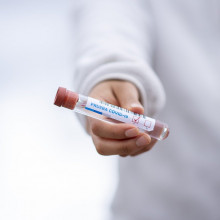
49:45 - Why antibody tests can be unreliable
Why antibody tests can be unreliable
Clare Bryant, University of Cambridge
Chris Smith asked University of Cambridge immunologist Clare Bryant about why antibody tests have been a false friend for some of these patients…
Clare - Yeah. It's a bit of a disappointment, isn't it. Antibodies, of course, are made over a period of time during the time course of an infection, so timing of the antibody test is absolutely critical. It appears that in the first week of infection, using an antibody test you only pick up about 30% of the people. This is because your antibodies are just beginning to be generated. Then by about weeks 2-3, where the antibody levels are peaking, at that point about 70% of people will positive. After that we're a little unclear, because it depends how long the antibodies last for and how sensitive the antibody test is. It's a little bit disappointing, because one hoped it would be a little bit more clear cut than that, but it's beginning to appear that the antibody test is not going to be the magic silver bullet that our prime minister hoped it would be.
Chris - Researchers in Sweden recently said, well, antibodies are not necessarily the be all and end all; and actually white blood cells - T cells - which also help to fight off infection, play a massively important role, and some people might have no antibodies but lots of T cells. What are they getting at, and would you agree with them?
Clare - Yeah, yeah definitely. I mean, there's two sides to every story with the immune system. So what the T cells do is they detect, pick up, and destroy infected cells. T cells also inform the B cells, and the B cells are the cells that generate the antibodies, so it will also help pile out more antibodies to attack the virus as well. Anything that stimulates T cell response will help with generating protective immunity against this virus. So antibodies and the T cells are actually critical to generating a potentially protective immune response. But again, I say that with the caveat that we hope that this is what's going to happen, and we hope that this is what a vaccine should do, is stimulate antibody responses and T cell responses. But as yet, we don't actually know because we haven't got that data yet.
Chris - If we look at other coronaviruses - because there are four common human coronaviruses that come every winter and they cause common cold-type symptoms - one of them infects cells via exactly the same root as this new coronavirus. So can we get some clues from how the immune system responds to that, to inform what the likely long term response to this new one will be?
Clare - You can get antibodies against that particular coronavirus and that will help protect you against colds for a while. The trouble is the protection doesn't seem to last very long. And so there's a lot of discussion about, if you use a vaccine, will you need to be regularly boosted? If so, how frequently? Because the protection you get against the cold-causing coronaviruses doesn't seem to last for a tremendously long time.
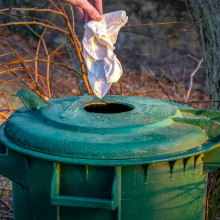
53:32 - QotW: Does burying paper sequester carbon?
QotW: Does burying paper sequester carbon?
Adam Murphy has been searching the files for an answer to this question from Johnny...
Johnny - Does burying paper in a landfill sequester carbon?
Adam - Makes sense in a way, trees are in the ground, trees make paper, if you put that paper back in the ground, you’re helping out? Right? Well, Shaun Fitzgerald, Royal Academy of Engineering Visiting Professor at the University of Cambridge might be able to stop us barking up the wrong tree.
Shaun - Carbon sequestration is the process by which carbon dioxide is removed from the atmosphere and locked away in various forms such as being buried underground, converted to minerals such as carbonates, used to raise the carbon content of soils, or stored as wood for future generations. It is very natural to post the question “Does burying paper in a landfill sequester carbon?" One might first think that given trees contain carbon, and trees were felled to make the paper, if we could keep it in landfill that might be a solution. However, there is more to it than that. We need to consider two things – the results of making paper in the first place, and then what happens if we put it in landfill.
Adam - Of course, as with so many things in science, the truth isn’t quite so simple.
Shaun - The tree loss caused by the manufacture of paper is staggering. About 35% of tress felled worldwide are used to feed the paper industry. We are not replacing these at the rate we are felling them, so our use of paper isn’t helping here on the carbon sequestration agenda. What about landfill once we have used the paper? Well, paper doesn’t stay in the same condition. Over time it will decompose and release methane and carbon dioxide. Both gases are a real problem. Methane is more potent as a greenhouse gas although it doesn’t last as long in the atmosphere as CO2, but nevertheless it lasts for years so is a real problem.
The simple answer is to use less paper.
Adam - Thank you Shaun for digging up an answer to that one for us. Next week. We’re looking out for an answer to this one, from Lionel.
Lionel - I installed a sensor that switches on a light when it detects a sound. However, when I clap my hands, the light appears to come on fractions of a second before I hear the sound. Does it take my brain longer to process the sound than the light?
Related Content
- Previous Homelessness
- Next Does burying paper sequester carbon?










Comments
Add a comment